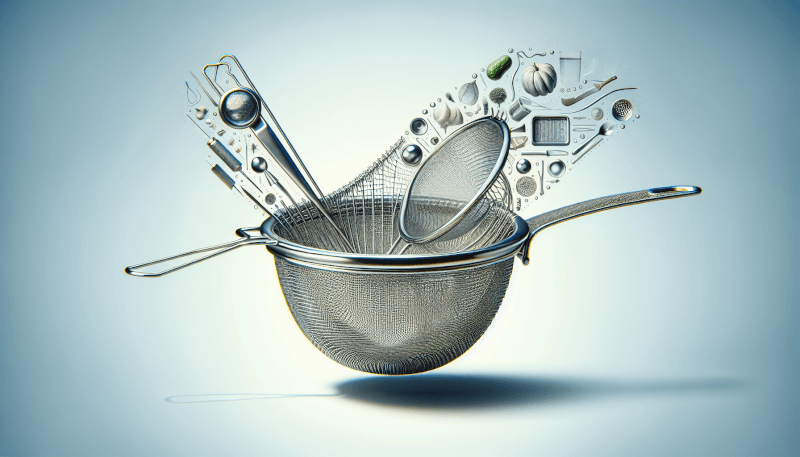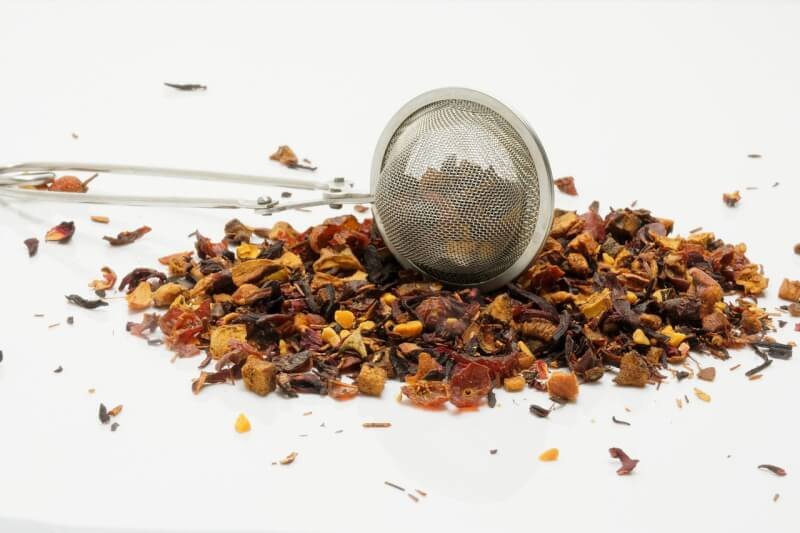Are you tired of dealing with soggy pasta or losing small ingredients down the drain while straining? Selecting the right type of strainer or colander for cooking can make a world of difference in your culinary adventures. With a wide variety of options available, it can be daunting to choose the one that best suits your needs. Don’t worry, we’ve got you covered! In this article, we will guide you through the factors to consider when selecting a strainer or colander, helping you make an informed decision that will elevate your cooking experience. Strainers and colanders are essential kitchen tools that can make cooking and food preparation much more efficient. But with the variety of choices available, how do you select the right type for your needs? In this comprehensive article, we will discuss the key factors to consider when choosing a strainer or colander, the different types available, and their functionalities. So let’s delve into the world of strainers and colanders to find the perfect one for you!
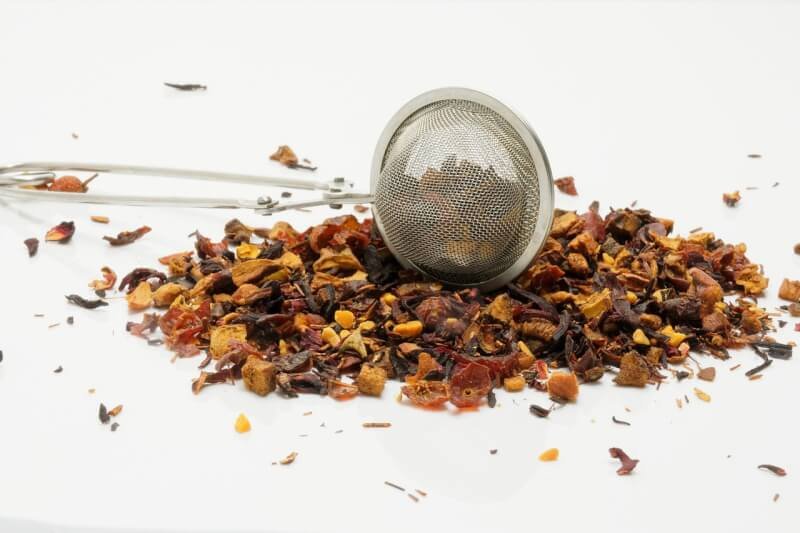
Factors to Consider
Functionality
The first factor to consider when choosing a strainer or colander is its functionality. Think about what tasks you’ll be using it for most often. Are you primarily straining liquids, draining pasta, rinsing fruits and vegetables, or sifting dry ingredients? Different types of strainers and colanders are designed for specific purposes, so it’s important to match their functionality to your needs.
Size
The size of the strainer or colander is another crucial consideration. Think about the amount of food you typically cook and whether you need a small, medium, or large-sized tool. Keep in mind that having different sizes can be beneficial, as it gives you more versatility in your kitchen.
Material
The material of the strainer or colander is another important factor to think about. The most common materials used are stainless steel, plastic, silicone, and wire. Each material has its own set of pros and cons, so consider factors such as durability, heat resistance, and ease of cleaning when making your choice.
Handle Design
Handle design plays a significant role in the usability and comfort of a strainer or colander. Some options include a single long handle, double handles, side handles, or long loop handles. Consider your personal preference as well as the ease of gripping and maneuvering the tool when making your decision.
Ease of Cleaning
Cleaning kitchen tools is never a fun task, so it’s worth considering the ease of cleaning when selecting a strainer or colander. Look for options that are dishwasher safe or made of materials that are easy to clean. Some might even come with a non-stick coating, which can further simplify the cleaning process.
Types of Strainers and Colanders
Now that we’ve covered the key factors to consider, let’s explore the various types of strainers and colanders available in the market. Understanding their differences will help you make a more informed decision based on your specific needs and preferences.
Mesh Strainers
Mesh strainers feature a fine mesh screen that allows liquids to pass through while trapping solids. They are ideal for tasks that require fine straining, such as separating seeds from citrus juice or straining custards. Within the category of mesh strainers, you’ll find options such as fine-mesh, medium-mesh, and large-mesh strainers, each suited for different levels of straining.
Perforated Strainers
Perforated strainers have small holes distributed across their surface, allowing liquids to pass through while retaining larger solids. These are commonly used for draining pasta or rinsing vegetables. Depending on the type, you can find single layer perforation, double layer perforation, or even a variety of hole sizes to meet your preferences.
Fine Hole Colanders
Fine hole colanders are similar to mesh strainers but usually larger in size. They are designed to strain liquids while ensuring finer particles don’t pass through. These are commonly used for tasks like washing rice or draining cooked beans.
Wide Hole Colanders
Wide hole colanders, as the name suggests, have larger holes to allow liquids to drain quickly. They are perfect for draining larger food items like pasta or blanched vegetables.
Stainless Steel Colanders
Stainless steel colanders are popular due to their durability and heat resistance. They are ideal for heavy-duty tasks like draining hot pasta or blanching vegetables, and their sturdy construction ensures longevity.
Plastic Colanders
Plastic colanders are lightweight and often come in vibrant colors. They are a budget-friendly option and great for everyday use. However, they may not be as durable as stainless steel options and may not withstand high heat.
Silicone Colanders
Silicone colanders offer flexibility and ease of use. They can be collapsed for convenient storage and are often heat resistant, dishwasher safe, and gentle on non-stick cookware.
Wire Colanders
Wire colanders are lightweight and allow for easy handling. They are commonly used for straining lettuce or small fruits, and their open design makes them quick and efficient for draining liquids.
Collapsible Colanders
Collapsible colanders are a space-saving option as they can be folded down for compact storage. They are available in various materials such as silicone, plastic, or stainless steel, offering versatility and convenience.
Colander/Strainer Sets
Colander/strainer sets typically include multiple sizes of either mesh or perforated strainers. These sets offer versatility and convenience, allowing you to choose the appropriate size for different cooking tasks. They often come with clever storage solutions, such as nesting or stackable designs, which help keep your kitchen organized.
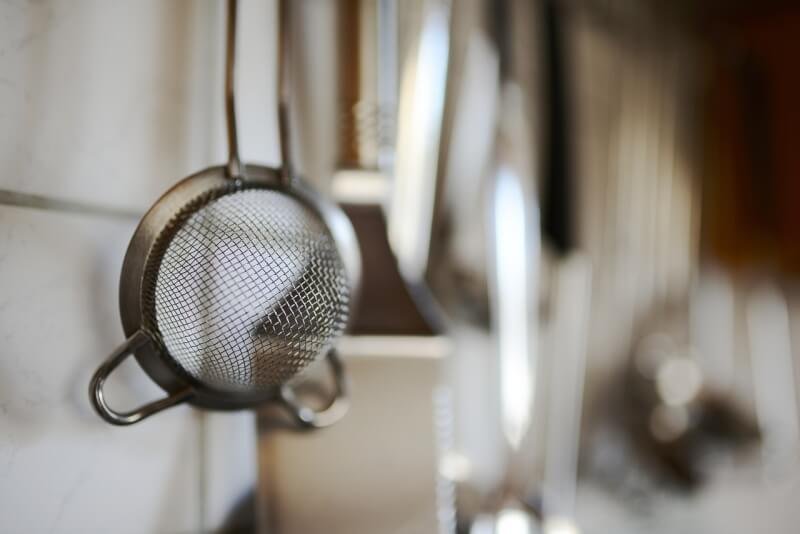
Functionality
Now that we have a good understanding of the different types of strainers and colanders, let’s delve into their specific functionalities.
Straining Liquids
Whether it’s separating tea leaves from your morning brew or straining homemade stock, strainers and colanders are the go-to tools for efficiently separating liquids from solids. Mesh and fine hole colanders work best for finer particles, while wide hole colanders and perforated strainers are ideal for larger solids.
Draining Pasta
One of the most common uses of strainers and colanders is for draining pasta. Look for a tool that has wide holes or a perforated design to allow water to drain quickly without letting the pasta slip through. The size should be large enough to accommodate the amount of pasta you typically cook.
Rinsing Fruits and Vegetables
Strainers and colanders are excellent tools for rinsing fruits and vegetables, ensuring they are clean and ready to use. Mesh strainers or colanders with fine holes work well for delicate produce, while wider hole options are suitable for larger items.
Sifting Dry Ingredients
When it comes to baking, sifting dry ingredients like flour or cocoa powder can improve the texture of your final product. Fine-mesh strainers are perfect for this task, as they effectively remove lumps and impurities while aerating the ingredients.
Size
The size of a strainer or colander can greatly impact its functionality and versatility in the kitchen. Consider the following size options when making your selection:
Small Strainers and Colanders
Small-sized strainers and colanders are ideal for tasks that require precision and minimal food quantities. They are perfect for tasks like sifting small amounts of flour or straining cocktail ingredients.
Medium Strainers and Colanders
Medium-sized strainers and colanders strike a balance between versatility and storage convenience. They can handle tasks like draining pasta for a small family or rinsing a moderate amount of vegetables.
Large Strainers and Colanders
Large-sized strainers and colanders are designed for handling larger quantities of food. If you frequently cook for a large group or find yourself making substantial batches of pasta, these sizes will serve you well.
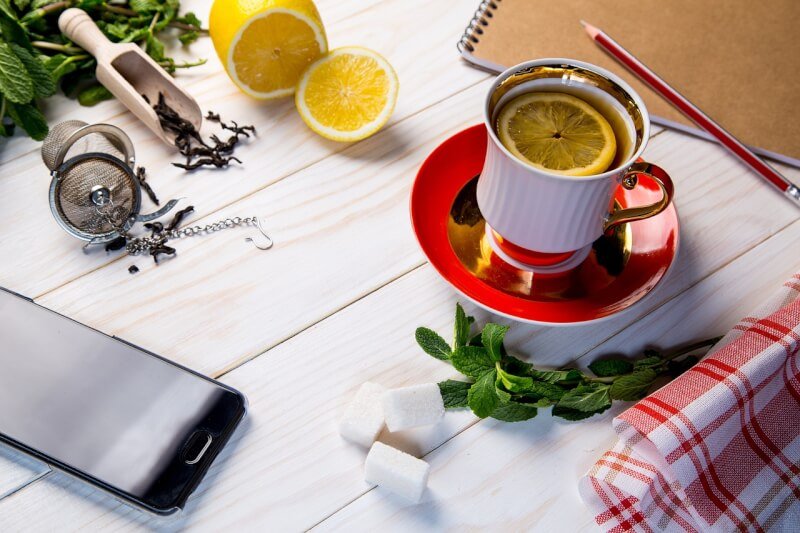
Material
The material of a strainer or colander affects its durability, heat resistance, and ease of cleaning. Let’s explore the common materials used:
Stainless Steel
Stainless steel is a popular material choice for strainers and colanders due to its durability and resistance to rust and corrosion. It can withstand high temperatures without warping or leaching harmful chemicals. Stainless steel is also easy to clean, and many options are dishwasher safe.
Plastic
Plastic strainers and colanders are lightweight and affordable. They often come in a variety of vibrant colors to add a touch of fun to your kitchen. However, they may not be as long-lasting as stainless steel options and may not be suitable for tasks involving high heat.
Silicone
Silicone is a flexible and heat-resistant material, making it an excellent choice for strainers and colanders. It can withstand high temperatures without melting or deforming, and many silicone options are dishwasher safe. Silicone is gentle on delicate cookware surfaces, making it a popular choice for non-stick pans.
Wire
Wire strainers and colanders are lightweight and easy to handle. They allow for quick draining due to their open design. However, they may not be suitable for fine straining or retaining smaller particles.
Handle Design
The handle design of a strainer or colander greatly affects its usability and comfort. Consider these handle options when making your choice:
Single Long Handle
A strainer or colander with a single long handle is easy to grip and offers stability while pouring or transferring food. It provides leverage and control, making it a popular choice for many cooks.
Double Handles
Double-handled strainers and colanders offer balance and stability when handling heavier food items. The two handles make it easier to hold and pour, especially when draining liquids from large pots or pans.
Side Handles
Side handles are perfect for larger-sized strainers and colanders. They allow for a secure grip and make it easier to lift and maneuver the tool, especially when dealing with hefty amounts of food.
Long Loop Handles
Strainers and colanders with long loop handles provide versatility in handling and storage. The loop handles offer a comfortable grip and can be hung for convenient storage options.
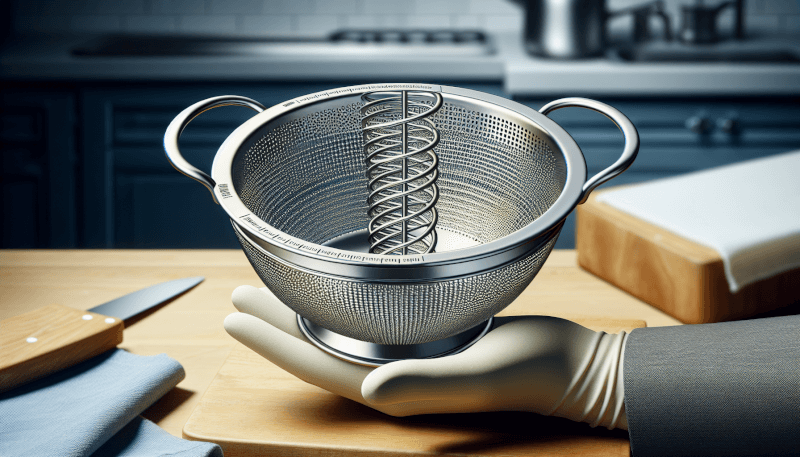
Ease of Cleaning
Nobody wants to spend excessive time cleaning kitchen tools, so it’s important to consider the ease of cleaning when choosing a strainer or colander:
Dishwasher Safe
If you prefer the convenience of a dishwasher, ensure that the strainer or colander you select is dishwasher safe. Stainless steel options typically handle the dishwasher well, but it’s always wise to check the manufacturer’s instructions.
Easy-to-Clean Materials
Choosing materials that are easy to clean, such as stainless steel or silicone, can save you time and effort in the long run. Non-stick coatings can also make cleaning a breeze by preventing food from sticking to the surface.
Non-Stick Coating
Some strainers and colanders come with a non-stick coating. This coating makes them effortless to clean as food particles are less likely to adhere to the surface. However, be cautious when using metal utensils on non-stick coated tools to avoid scratching or damaging the coating.
Conclusion
Choosing the right strainer or colander is essential for efficient cooking and food preparation. By considering factors such as functionality, size, material, handle design, and ease of cleaning, you can find the perfect tool that suits your specific needs and preferences. Whether you opt for a stainless steel mesh strainer for fine straining or a collapsible silicone colander for space-saving convenience, investing in a high-quality strainer or colander will greatly enhance your culinary experiences. Happy cooking!
